Silencing Dissent — By Law
F. Roger Devlin, American Renaissance, July 3, 2020

Paul Matzko, The Radio Right: How a Band of Broadcasters Took on the Federal Government and Built the Modern Conservative Movement, 2020: Oxford University Press, 320 pages, $34.95 (hardcover)
Libertarian Paul Matzko’s new book tells the story of a campaign to silence dissent from the Right during the 1960s, which in certain ways prefigures today’s deplatforming wars. The medium at stake then was radio, which became a home for conservative opposition in the late 1950s and early 1960s, much earlier than most people realize.
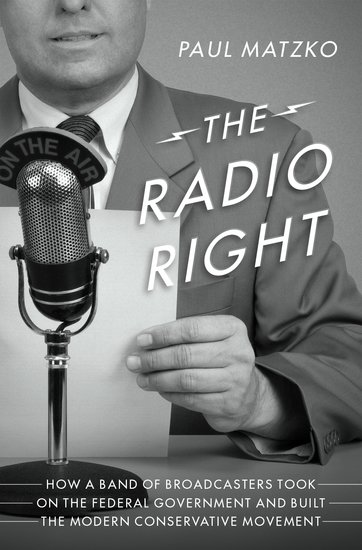
Before the rise of television, most radio stations were affiliated with one of four major national radio networks such as NBC and CBS. The networks produced national programming, which they distributed to local stations for a fee. They also had a right to veto local programming and were quick to overrule anything they feared might be “controversial.” The resulting programming was bland.
The emergence of television in the 1950s led to a scramble on the part of national networks to invest in the new technology — and divest from the old. By 1952, fewer than half of American radio stations had a network affiliation, and that fraction continued to drop. Perhaps surprisingly, the number of stations also increased during these years, nearly quadrupling between 1945 and 1960. The result was a transformed radio landscape of small, independent, and often cash-strapped stations that could not afford to be picky about accepting “controversial” programming:
Niche political groups were suddenly able to buy timeslots on stations all across the country. Conservative broadcasting was utterly transformed. In the early 1950s not a single nonnetwork conservative broadcaster aired on more than a handful of stations. Within a decade, a dozen conservative broadcasters aired on a hundred or more independent stations nationwide, most on a daily basis. [page 14]
Conservatives had tremendous reach. The most popular program was Rev. Carl McIntire’s Twentieth Century Reformation Hour. Beginning with just two stations in 1957, McIntire reached 20 million listeners at over 480 stations at his peak in 1964. Dr. Matzko also profiles Billy James Hargis’s Christian Crusade. Other conservative household names of the time included the Dan Smoot Report, Clarence Manion’s Manion Forum, and Texas oilman H. L. Hunt’s Life Line. Dr. Matzko notes that tens of millions of people listened to these programs every week at a time when William F. Buckley’s National Review had just 73,000 subscribers.
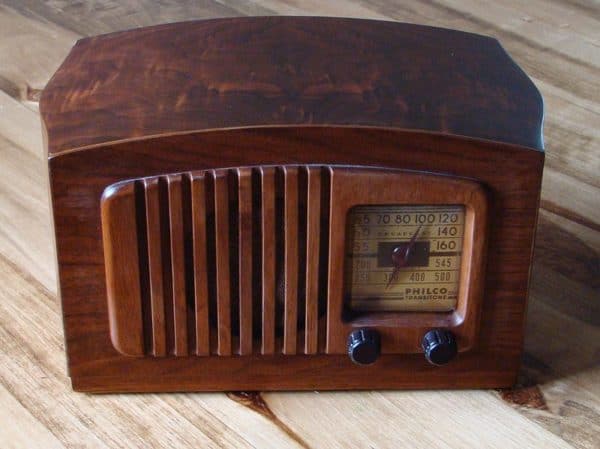
The power of radio: boycotting Polish ham
Dr. Matzko describes the influence of conservative radio with the now-forgotten story of the Polish Ham Boycott:
Following Stalin’s death, some of the Communist nations of Eastern Europe, including Poland, cautiously began asserting a measure of autonomy from the Soviet Union. Hoping to use this development to drive a wedge between the Soviet Union and its allies, Pres. Eisenhower granted “most favored nation” (MFN) trade status to Poland in 1958. Then-Senator John F. Kennedy agreed, asking “if we fail to help the Poles, who else will dare stand up to the Russians and look westward?” [28]
This argument was lost on many Americans, however, for whom any trade with the communist enemy was anathema. In January 1962, after spotting a Polish ham at his local grocery, a Miami chiropractor set up a protest group called “The Committee to Warn of the Arrival of Communist Merchandise on the Local Business Scene.” For several months, protests were local. Then, on July 2, Carl McIntire devoted an episode of his program to the Miami boycott. Within weeks, 260 local committees sprouted up across the country. Most members were housewives. They discreetly placed small cards in the aisles of offending stores with sarcastic messages such as “Always buy your communist products at SuperGiant.” Targeted stores began losing sales; panicked managers dropped the offending merchandise and even issued apologies. Poland saw a $2.6 million drop in ham exports.
This popular movement took the Kennedy administration by surprise just as Congress was debating a trade bill. When the bill passed in October 1962, it included an amendment revoking MFN status for Poland and Yugoslavia. It was an embarrassing defeat for the President.
By early 1963, two dozen American towns had gone on to pass local ordinances discouraging the sale of Eastern European products. Typically, they made retailers apply for a license costing between $1,000 and $5,000, and display prominent signs announcing that the store was “Licensed to Sell Communist Imports.” [40]
Most of these ordinances were never enforced, and when they were, the courts usually sided with shopkeepers. Their direct effect was, however, less important than their demonstration of the power of the grassroots opposition coordinated with the help of radio. Boycotters had:
compelled dozens of the largest retailers in the country to drop the offending products, convinced at least two dozen major cities to enact ordinances, and swayed Congress itself into revoking MFN status to Yugoslavia and Poland. [44]
The Kennedy Administration vs. conservative radio
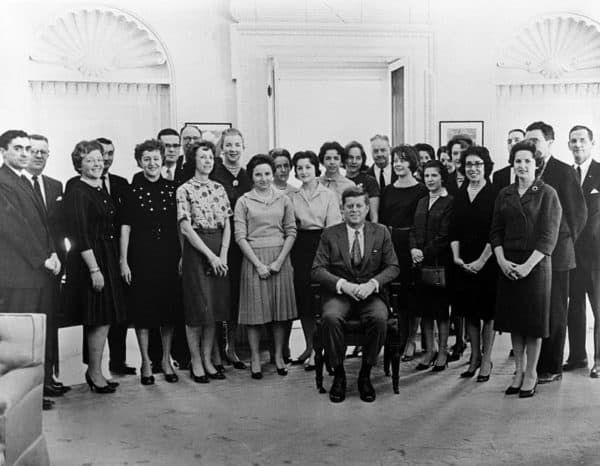
The principle subject of Dr. Matzko’s book, however, is not conservative radio’s spectacular growth and influence in the early 1960s but its gradual suppression by a coalition of liberal interest groups. Broadly speaking, censorship was led by the Kennedy Administration from 1961–63, by the Democratic National Committee (DNC) in the election year 1964, and by the liberal National Council of Churches (NCC) in the latter part of the decade. Acting through the regulatory power of Federal Communications Commission (FCC) and sometimes the audit power of the Internal Revenue Service (IRS), these forces all but eliminated conservative radio in the late 1960s. Conservative broadcasting would have to be rebuilt virtually from scratch beginning in the late 1970s.
Within weeks of John F. Kennedy’s inauguration in 1961, Attorney General Robert Kennedy began a series of meetings with labor leaders Walter and Victor Reuther to plot a reelection strategy for 1964. He asked them to find a way to undermine what he called the “extreme right wing.” Later that year, the Reuther brothers submitted a 24-page paper called “The Radical Right in America Today,” popularly known as the “Reuther Memorandum:”
The focus of the memorandum was on right-wing broadcasters. The Reuther Memorandum noted these broadcasters’ ability to rouse “vicious local pressure campaigns against teachers or preachers or anyone else who supports anything from negotiation in foreign affairs to governmental programs in domestic affairs.” Their “pressure tactics on already timid Congressmen” were already having an effect on the administration’s legislative agenda. [5]
In response, the Reuthers outlined specific steps for the Kennedy administration to take “to contain the radical right from further expansion and in the long run reduce it to its historic role of impotent lunatic fringe.” [78]
The administration acted on two recommendations. The first aimed at interrupting the flow of money to conservative organizations, most of which claimed exemption from federal taxes as educational groups. As such, they were not supposed to engage in partisan politics. However:
the IRS had neither the means nor the inclination to investigate every group that applied. But if the Kennedy administration could revoke even a few tax exemptions, they “might scare off a substantial part of the big money now flowing.” The Treasury Department should be encouraged to begin “undercover operations” to find tax violations by these organizations, their founders, and their donors. [78–79]
The second recommendation was combating critics over the airwaves. Victor Reuther reported having heard Billy James Hargis assure listeners to his Christian Crusade broadcast that the Communist Party USA had filled the Kennedy administration with Communist staffers. He suggested the FCC should “encourage” (i.e., pressure) stations that aired programs such as Hargis’s “to assign comparable time for an opposing point of view on a free basis.”
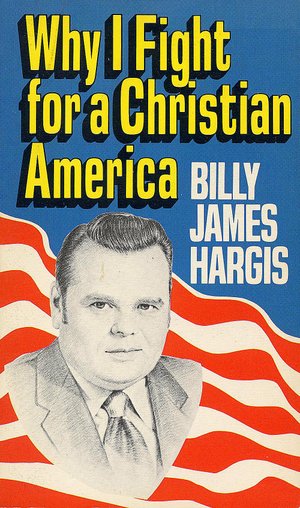
These two recommendations had the advantage of not being easily traceable back to the administration. Both the IRS and the FCC had the legal right to investigate the abuses mentioned in the memo. It was simply a matter of two federal agencies enforcing regulations that had been long neglected. It would be all but impossible for conservatives to prove that they were receiving targeted, unfavorable treatment. [79]
In late 1961, the administration acted on the Reuthers’ first suggestion by arranging for the IRS to audit “organizations generally considered to be right-wing.” The head of the audit division, Mitchell Rogovin, compiled a list of 18 such groups. At the top stood the Reuthers’ bête noir, Billy James Hargis and his Christian Crusade; other conservative broadcasters were also included. Rogovin himself was appointed lead investigator for the audit campaign.
In March 1962, somebody realized that a campaign exclusively against conservative groups would not look good if it became known. A revised list was prepared that reduced the number of conservative groups to 12 and added 10 left-wing groups for camouflage. This list was then forwarded to Robert Kennedy, who signed off on it, but Rogovin instructed his subordinates to “first deal with the right-wing groups.” Later, he revised the list again, dropping most of the left-wing groups and adding several additional conservative broadcasters, including Carl McIntire. In the end, the IRS audited 24 groups and revoked the tax-exempt status of 15, all of them conservative.
Dr. Matzko illustrates how the audit campaign functioned, with the example of Billy James Hargis. The IRS began by forwarding the “balanced” version of its target list to the Tulsa office, where Christian Crusade was produced. But the local agent assigned to the case reasoned that neither Hargis’s rhetoric nor the relevant tax code had changed since the IRS first granted Christian Crusade a tax exemption in 1952. Consequently, between 1962 and 1964, the agent returned a “no charge report” four times. Each time the national office instructed him to look again and look harder. When its patience finally ran out, it ordered the Tulsa office to ask for “technical advice” from Washington, and even sent instructions on how to word the request. As soon as the national office got its hands on the case, it recommended Christian Crusade’s tax-exempt status be revoked and charged it $100,000 in “back taxes.” Hargis spent eight years fighting the ruling, which was eventually reversed. But by then the damage was done: Countless donors had been scared off.
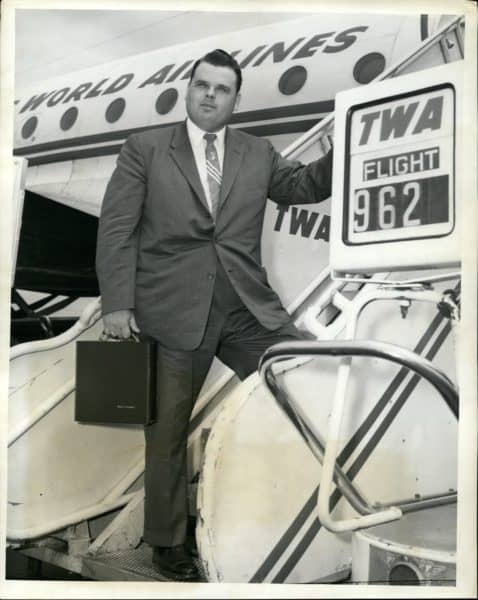
Dr. Billy James Hargis. (Credit Image: © Keystone Pictures USA / ZUMAPRESS.com)
The administration’s principle tool against conservative radio, however, was the so-called Fairness Doctrine, originally established by the FCC in 1959. The Reuther Memorandum’s call for pressuring broadcasters for “comparable time for an opposing view” was an appeal to this doctrine, which as first formulated under the Eisenhower administration included three main components: 1) stations that gave airtime to one candidate for political office had to offer “equal time” to opposing candidates; 2) stations had to notify targets of “personal attacks” and offer them airtime to respond; 3) stations were required “to afford reasonable opportunity for discussion of conflicting views on matters of public importance.” [106-7]
The Kennedy administration lost no time appointing activism-minded allies to the FCC. Their early efforts, however, were directed against the major television networks, and they had enough resources to fight back. By 1963, the activists realized they would have to begin with more vulnerable targets such as independent radio stations with little money and no political connections.
On July 26, Kennedy’s man at the FCC issued a “clarification” of the Fairness Doctrine that required station owners who aired personal attacks to notify the persons or groups attacked and give them “a specific offer of his station’s facilities for an adequate response.” As an example, the FCC said that if a station aired an editorial in support of segregation, then it must offer “similar opportunities” to those who favored desegregation. There were other clues as to the partisan intent: “It is immaterial whether a particular program or viewpoint is presented under the label of ‘Americanism,’ ‘anti-communism,’ or ‘states rights,’” [112] wrote the FCC — but all of these expressions were unmistakably associated with the right. They were to be the targets of “fairness,” as liberal groups instantly recognized:
The next day, the Washington Human Rights Project, a pro-civil-rights organization, mailed all of its members selections from the statement. Since the FCC had made “clear reference to programs such as ‘Life Line,’ Billy James Hargis, and White Citizens’ Council broadcasts,” it was “absolutely essential” that members immediately contact their local stations and request response time. [113]
The first public issue to get the full “fairness” treatment was a proposed treaty to ban above-ground nuclear testing. The administration favored it, while “all the major right-wing broadcasters, including Hargis, Carl McIntire and Clarence Manion, blasted away at the treaty throughout 1963, reaching a fevered pitch that summer.” [111]
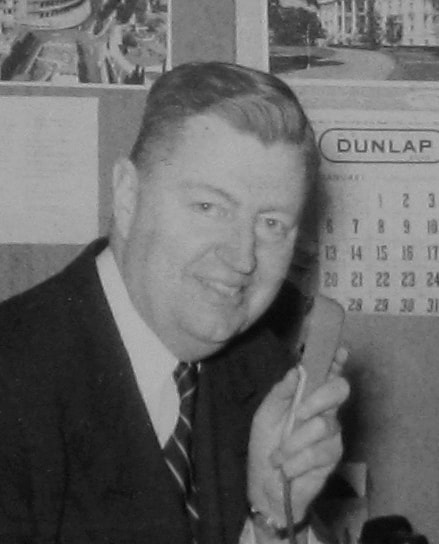
Carl McIntire (image via Wikipedia)
The administration’s principal ally in the early phase of the debate was the National Committee for a Sane Nuclear Policy, founded in 1957. But this organization had advocated radical positions, such as total disarmament of both nuclear and conventional weapons. The President decided he needed a new, more “bipartisan” organization. The Citizens Committee for a Nuclear Test Ban (CCNTB) was established at a White House meeting on August 7, 1963. James J. Wadsworth, a liberal Republican who had been involved in early negotiations for the treaty under Pres. Eisenhower, was chosen as the public face of the new organization. Immediately following the White House meeting, Wadsworth sent out a blizzard of letters to radio stations that aired the Manion Forum, the Christian Crusade, and Life Line, demanding free response time. Most of the stations knuckled under.
Two stations wrote the FCC, asking whether they were required to give the CCNTB free time or merely sell them time; they also argued that the pro-treaty position had already been presented in other programming on their stations. On September 18, the FCC responded that stations were required to offer free response time if they could not find anyone willing to pay. Furthermore, if in their “good faith judgment” [116] they believed their programming had already sufficiently informed the listening public about both sides of an issue, they could deny the request for response time. As Dr. Matzko phrases it, this “was a risk they were free to take but a risk nonetheless.” [117] These FCC rulings became known as the “Cullman Doctrine,” after the location of one of the inquiring stations in Cullman, Alabama.
Left with no clear criteria for determining compliance, stations became wary of broadcasting conservative programs. The Cullman station, for example, chose not to extend its contract with Carl McIntire when it expired at the end of 1964.
Dr. Mazko summarizes:
A sitting US president, annoyed by opposition to a favored piece of legislation, created an interest group to lobby for its passage. He ordered the IRS to audit his political foes while encouraging the FCC to scrutinize their unbalanced use of the airwaves. The FCC then revised its regulations to ensure free airtime for the president’s front organization. It is one of the greatest acts of bureaucratic strong-arming in American history. [124]
The DNC and the election of 1964
In the fall of 1963, administration official Wayne Phillips was charged with monitoring right-wing broadcasts for attacks on specific organizations and government programs and notifying the targets. He secured over 500 free response programs for various allies of the Democratic Party, and was rewarded in January 1964 with a new position as director of news and information for the DNC. Under his direction, the DNC barraged stations airing right-wing programs with demands for response time in the run-up to the Presidential Election of 1964. When Clarence Manion criticized federal urban renewal programs on the air, the DNC secured 108 free rebuttals. When the Dan Smoot Report accused Lyndon Johnson of being willing to “contrive a war” to win election, the DNC claimed another 33. They began treating criticisms of any member of the administration or its agencies as “an attack on the nature and quality of Presidential appointments,” securing 61 offers of free time with this gambit. Other liberal organizations soon joined in what Dr. Matzko describes as a “feeding frenzy.” [136]
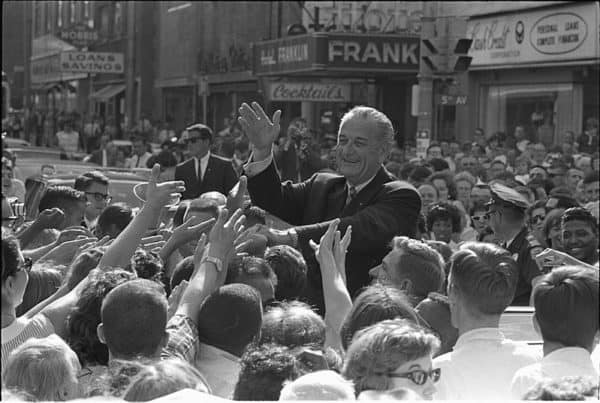
President Lyndon B. Johnson shakes hands with crowd members. (Credit Image: Yoichi Okamoto via Wikimedia)
After Lyndon Johnson’s victory, the DNC Chairman reported that Wayne Phillips had gotten more than 1,700 free broadcasts, including 234 in the crucial final week before the election. However, as Phillips himself noted:
“more important than the free radio time. . . was the effectiveness of this operation in inhibiting the political activity of these Right Wing broadcasts.” Conservative broadcasters had continually attacked first Kennedy and then the Johnson administration, but after the DNC initiated its campaign, these kinds of attacks “virtually disappeared.” [137]
Other DNC officials were explicit that their goal was to make airing conservative broadcasts so onerous that stations would drop them. This is exactly what happened: Carl McIntire’s program began losing stations in 1965.
Imitating the front group strategy that the Kennedy Administration had used to support ratification of the Test Ban Treaty, the DNC set up a so-called National Council for Civic Responsibility (NCCR) to fight conservative radio. It found a suitable liberal Republican leftover from the Eisenhower Administration to serve as a “bipartisan” figurehead, unaware that the organization he was supposedly leading had been almost entirely funded by the DNC.
To attract further donors, the NCCR needed tax-exempt status. “Applying with the IRS would have been straightforward,” writes Dr. Matzko, “but they might not have gotten a ruling until after the election was over and doing so would have meant publicly disclosing financial information,” which would have exposed them as a DNC front. Somebody got the idea of looking for a defunct organization that already had tax-exempt status and legally merging with it. They settled on the Public Affairs Institute, an advocacy group founded in 1948, which had long since run out of money and existed only on paper. The merger was quickly put through.
With DNC funding, a Republican figurehead, and tax-exempt status, the NCCR went public in October 1964 with a full-page ad in the New York Times called “Six Reasons Why You Should Worry About Extremism in the US Today.” Three of the reasons had to do with right-wing influence on the airwaves:
Conservatives were spending $10 million a year on more than seven thousand weekly broadcasts across the country, [writes Dr. Matzko,] a 1,300% increase since 1958. The NCCR promised to monitor all broadcasts made by the ten largest conservative broadcasters, including Carl McIntire, Billy James Hargis, Clarence Manion, Dan Smoot, and the John Birch Society. They would tape each program so as to identify attacks and demand response time. [142]
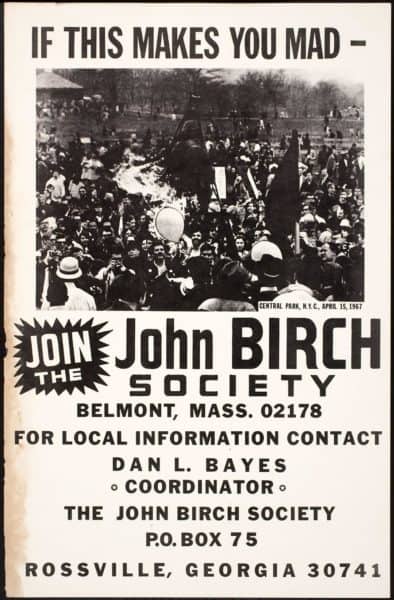
After the election, however, the NCCR “imploded in rather spectacular fashion. The flood of expected donations never materialized, and once Lyndon Johnson had secured re-election the DNC lost any interest in subsidizing the council.” [143] The head of the Public Affairs Institute with which the NCCR had been merged “felt justified in taking part of the DNC’s seed money as compensation for startup costs that he said he had paid out of his own pocket.” [143] The DNC accused him of theft, but abandoned all thought of legal action when he responded by leaking embarrassing information to a columnist. The NCCR’s Republican figurehead realized he had been duped into serving as a tool of the DNC, and the project died amid mutual recriminations.
The NCCR never amounted to much, but its story wonderfully reveals, in Dr. Matzko’s words, “the lengths to which the DNC was willing to go to undermine conservative broadcasting.” [138]
Resistance: the story of WGCB
Most station managers who aired conservative broadcasts were indifferent to their message; they aired shows that were popular. As a result, it was not hard to get most stations to submit to FCC interference once the advantages of compliance outweighed the disadvantages. There were, however, exceptions.
Station WGCB (“The World for God, Christ and the Bible”) in Red Lion, Pennsylvania, was owned and operated by 86-year-old Rev. John M. Norris, a minister in Carl McIntire’s Bible Presbyterian Church. Besides McIntire’s show, the station broadcast Dan Smoot, Billy James Hargis, Clarence Manion and H. L. Hunt’s Life Line. In a summer 1964 issue of Broadcasting, the industry’s trade journal, Rev. Norris came across an article on the “problem” of right-wing radio: “Hate Clubs of the Air,” by a certain Fred Cook. Since WGCB had not received any cease-and-desist letters, Norris realized his station must have escaped the attention of the DNC. Taking this as a personal affront, the feisty minister wrote to the DNC asking them to add WGCB to its hit list; he also mentioned his disappointment that his station was airing only seven of the nine programs to which the DNC had objected, promising to add the other two as quickly as possible.
The DNC rectified its oversight and began bombarding Norris with demands for response time. He offered to sell the offended parties airtime, but refused to give it away. He then hired a lawyer and sued both the DNC and the FCC for harassment, arguing that the Fairness Doctrine violated the First, Fifth, Ninth, and Tenth Amendments to the Constitution by infringing on freedom of speech, taking airtime “property” without due process, and delegating law-making authority to the FCC. He demanded $5 million in compensation. In 1965, a US district court judge dismissed the suit as frivolous.
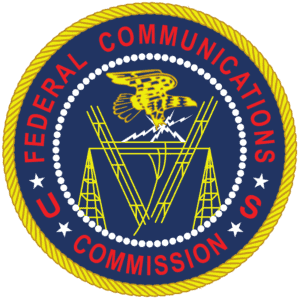
Norris might have appealed to the Supreme Court, but a more promising opportunity to challenge the Fairness Doctrine had already arisen. In November 1964, WGCB aired Billy James Hargis’s attack on Fred Cook, author of “Hate Clubs of the Air,” so the following month Cook sent the station a letter demanding free response time. Norris offered only paid time, so Cook lodged a complaint with the FCC. After nearly a year, the FCC ruled in Cook’s favor, suggesting Norris could appeal to the courts if he found this decision unfair. He did, and quickly sued the FCC for its handling of the Cook complaint. This time around, he emphasized two arguments: 1) that the FCC’s criteria for determining violations of the Fairness Doctrine — filled as they were with expressions like “reasonable opportunity” and “contrasting views of all reasonable elements” — were unacceptably vague; and 2) that fear of FCC punishment violated the free speech rights of station owners.
In its June 1967 ruling, the US Court of Appeals in the District of Columbia rejected both arguments, and two years later the Supreme Court upheld the ruling by a vote of eight to zero. Speaking for the court, Justice Byron White acknowledged that evidence of self-censorship by radio stations in response to the FCC’s Fairness Doctrine would “indeed be a serious matter,” since the stated purpose of the doctrine was to encourage robust debate about matters of public importance. But he noted the FCC’s assurances that any such self-censorship was “at best speculative” and that “the fairness doctrine in the past had had no such overall effect.” [154] Of course, the FCC was itself a party to the case. Dr. Matzko writes:
Given the FCC’s active involvement with the DNC’s and White House’s counter-Radio Right campaign, White had essentially expressed his confidence in the dedication of the fox to guard the chicken coop. The purpose of the White House’s and the DNC’s employment of the Fairness Doctrine was to curtail anti-administration speech from conservative broadcasters. [154-5]
The author speculates that judges might have decided differently if the information contained in this book had been known to them.
The National Council of Churches takes the baton
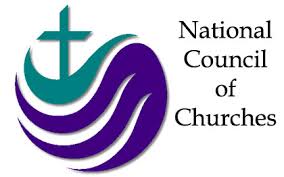
The DNC did not continue its campaign against conservative radio once Lyndon Johnson had won election in November 1964, but other liberal interest groups picked up the slack. Of these the most important was the National Council of Churches (NCC), a Protestant umbrella organization whose 45 million members made it the largest religious grouping in America at that time. Carl McIntire’s American Council of Christian Churches had just 120,000 members.
As far back as the Communications Act of 1934, all radio stations had been required to dedicate some portion of their programming to news, religion, and educational programs free of charge. The NCC, as the representative of the majority of Protestant churches in America, received a lot of this free airtime. The organization maintained a Broadcasting and Film Commission (BFC) to produce radio programming, financing it through contributions from member denominations. With network radio in decline, however, funding also declined.
Religious radio listeners were voting with their donor dollars; conservative broadcasters were winning by a landslide. From 1964 to 1966, the BFC averaged an annual income of approximately $250,000; Carl McIntire alone averaged $2,040,000 in annual receipts during the same period. Moreover, the financial disparity was worsening as the BFC began to hemorrhage money. [163]
By 1966, the BFC was operating at an annual loss of $140,000, and had to close its West Coast office. Moreover, the National Council of Churches itself was being threatened with secession: The First Baptist Church of Wichita, Kansas, e.g., voted to leave the organization in 1960 under the influence of conservative broadcasters, and others threatened to follow.
NCC clergy were both theologically and politically more liberal than either their evangelical counterparts or the worshipers in their own pews, and many of its leaders were determined to combat all threats to liberal hegemony. Unable to compete in the marketplace with McIntire, Hargis, and others, the NCC turned to the FCC and its Fairness Doctrine.
Dr. Matzko has found plenty of evidence that the NCC did not wish to be publicly seen as censors, however. Its preferred tactics were to let member organizations and local groups lead campaigns against conservative radio, giving it plausible deniability, even as it organized and collaborated behind the scenes. It had many catspaws, but one was the United Church of Christ (UCC), a denomination of some two million members at the time.
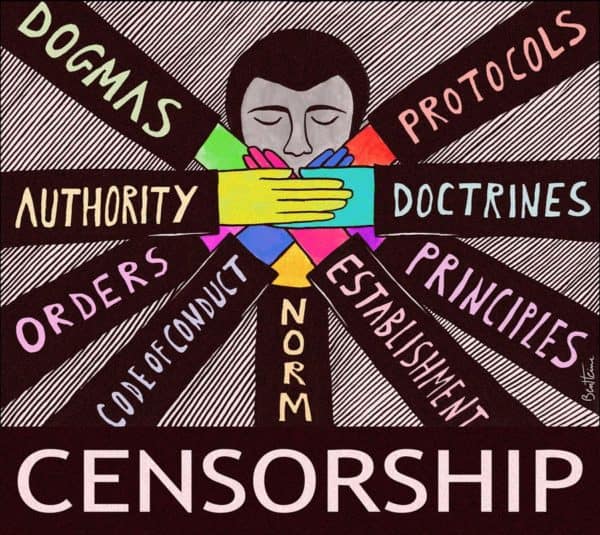
In the early 1960s, the UCC targeted a local television station, WLBT-TV in Jackson, Mississippi. The station was controlled by a family of Texas oilmen, and strongly supported popular resistance to desegregation. When James Meredith enrolled at the University of Mississippi, WLTB urged listeners to “go out to Oxford and stand shoulder to shoulder with Governor Barnett and keep that nigra out of Ole Miss.” [168] It also made a point of never using titles — Mr., Mrs., etc. — with black interviewees.
The FCC Chairman encouraged the UCC to file a complaint against the station at the time of its license renewal hearing. The difficulty was that FCC rules granted standing at such hearings only to those, such as competing stations, that had a material interest in the outcome. The UCC did not appear to qualify. Nevertheless, it pressed on with its complaint, assisted by an amicus curiae brief from the NCC’s Broadcasting and Film Commission.
In 1966, Warren E. Burger, then chief justice of the US Court of Appeals for the District of Columbia, ruled that the UCC did, in fact, have standing before the FCC (the author does not explain his reasoning). After three more years of investigation and appeals, Burger directed the FCC to revoke WLBT’s license. The FCC gave a UCC-sponsored group control of the station in 1969.
This ruling on a television station license had no direct effect on conservative radio, but Burger’s decision to grant the public legal standing before the FCC most certainly did: It meant that listeners could not merely file complaints against broadcasters but also testify at FCC license renewal hearings. This gave the UCC the platform it needed to silence the likes of Hargis and McIntire.
It wasted no time launching a national monitoring campaign ostensibly aiming to “counterbalance right and left wing propaganda;” in practice, it harassed only stations airing conservative programming. The UCC approached a number of liberal foundations for funding, and Dr. Matzko quotes an exchange between two UCC employees on how best to approach the Ford Foundation: “I think the Ford people want something they can brag about. Ideally they would like to be able to picture themselves as financing a project that went into the deepest darknesses of the South where lynching occurs in every small town every Saturday night.” [203] Apparently, the UCC did not anticipate any difficulty in finding such a place.
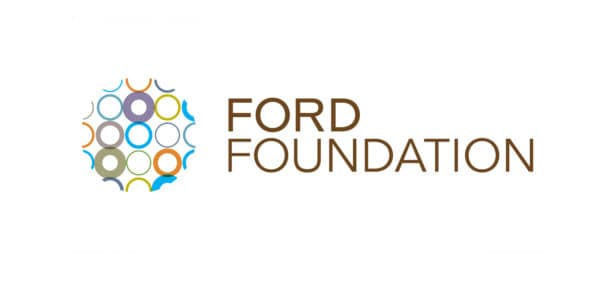
Between 1968 and 1978, the Ford Foundation granted the UCC nearly $1 million to monitor radio and television stations in the 27 largest cities of the South, later calling the project “one of the two or three most significant and effective civil rights efforts in the nation during that period.” At one point, the UCC convinced the FCC to delay renewal of all 24 station licenses in Atlanta, Georgia, long enough to pressure the stations into accepting an agreement on the number of black employees and the political balance of their programming. The whole campaign was a stunning success save in one respect: the worshipers in the pews did not like it. Both the NCC and the UCC began losing members, mostly to the Evangelical movement.
The decline of conservative radio
In July 1967, the campaign against conservative radio got an important boost when the FCC issued a further “clarification” of its Fairness Doctrine:
Stations that aired personal attacks “upon the honesty, character, integrity or like personal qualities of an identified person or group” while discussing “a controversial issue of public importance” had to notify the person or group attacked within a week of the broadcast with a copy of the offending tape or transcript. Failure to comply could mean as much as $10,000 in fines for each violation and the FCC would consider the number of violations while ruling on license renewals. [191]
It now became the responsibility of broadcasters such as McIntire and Hargis to provide affiliated stations with these tapes or transcripts. The “clarification” added considerably to the expenses of both radio stations and program producers.
In the months following, letters from station managers poured into McIntire’s office, either dropping the Twentieth Century Reformation Hour outright or asking him to go easy on the personal attacks. One station owner bluntly stated that “the FCC has got their teeth in my bread and butter.” [206]
The number of stations carrying the show declined as precipitously as it had risen a few years earlier, falling by more than half during 1966–68. McIntire was soon struggling financially. By 1976, his program was carried by only 30 stations, a 94 percent decline from his 1964 peak of 480, and he was no longer able to pay his electric bill. Similar stories could be told of other conservative radio personalities; the reason Dr. Matzko concentrates on McIntire is that his papers were preserved when his office was seized for nonpayment of taxes in the 1990s.
Nixon versus the networks
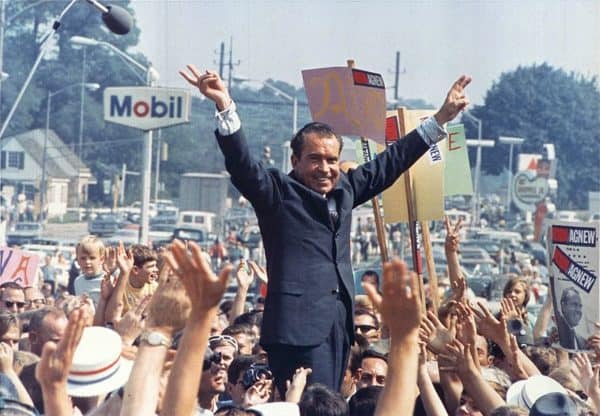
Credit Image: Ollie Atkins via Wikipedia
By 1969, the US once again had a Republican president, but this was of little immediate comfort to conservative broadcasters. First, Richard Nixon had always viewed men such as McIntire and Hargis as enemies from the Right, and unhesitatingly turned down their pleas for help. Second, he was extremely partial to the Fairness Doctrine, even though the uses to which he put it was the opposite of that of liberal crusaders.
In the early months of his presidency, Nixon frequently sent notes to subordinates ordering them to browbeat liberal journalists, plant fake letters to the editor, commission hit pieces by sympathetic authors, or demand equal response time under the Fairness Doctrine. At one point, presidential assistant Jeb Magruder complained of receiving 21 such directives in just 30 days.
In the fall of 1969, Magruder composed a memorandum that included five recommendations: 1) set up an official monitoring system at the FCC from which to issue official governmental complaints to journalists; 2) get the IRS to audit offending networks; 3) have the anti-trust division of the Department of Justice “look into” such networks; 4) play favorites within the media, giving access and scoops only to sympathetic journalists; and 5) ask the Republican National Committee to start a letter writing campaign to the FCC. Magruder’s memo explicitly mentioned precedents set by Kennedy.
Nixon took Magruder’s advice. He tried to get the IRS to audit opponents, but the agency was less cooperative than it had been under Kennedy. His first public target was NBC News anchorman Chet Huntley who, shortly before retiring, had remarked of Nixon: “The shallowness of the man overwhelms me; the fact that he is President frightens me.” Magruder wrote up a “plan on press objectivity” aimed at extracting an apology from Huntley (which he got), as well as convincing the public to “question the motivations for such remarks” and view them as a “breach of professional ethics.” [215]
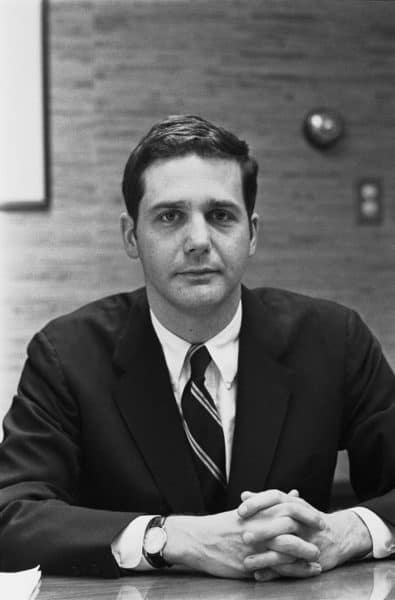
Jeb Magruder
Nixon’s reelection committee planned a whole campaign of articles, books, and letters to the editor defending the President.
On the broadcasting front, they would have FCC Chairman Dean Burch “express concern” when asked about press objectivity in a stage-managed letter from a congressman. Then they could “form a blue-ribbon media ‘watchdog’ committee to report to the public on biased reporting.” Meanwhile, a senator would write a public letter to the FCC mooting the idea of “licensing” newsmen because, after all, “the airwaves belong to the public.” [216]
FCC Chairman Burch also reinterpreted some rules to the President’s advantage. One was that any outlet airing a message from one party’s political candidate must offer equal time to the other party’s candidate. CBS had interpreted this to mean that Presidential addresses should be followed by remarks from a congressman of the opposite party. Burch now explained to them that it was necessary to “separate the President from his office:” [216] when he spoke to the nation from the White House, he was speaking as the president, not as candidate Richard Nixon, so CBS should not air any Democratic Party response. CBS complied, but challenged the rule in court.
More serious for the networks was a new primetime access rule that restricted how much network-created programming local affiliates could air during peak evening hours. This weakened network control over local affiliates and limited a major source of their revenue.
By September 1970, less than a year after the Magruder Memorandum, one administration official wrote to another that network bosses had become “accommodating, cordial and almost apologetic” in meetings; they were “terribly nervous over. . . the recent FCC decisions” fearing that “we could . . . through the FCC make any policies we wanted to. (This is worrying them all.)” [217]
Dr. Matzko found evidence that at least some the liberal reformers of the 1960s began having second thoughts when they saw the uses to which Nixon was putting their legacy: The monster they had created had escaped their control.
The end of the Fairness Doctrine
Although Nixon never intended to roll back the Fairness Doctrine, several years of Republican nominations to the FCC resulted in lowered commitment to enforcement. Under President Carter, broadcasting was extensively deregulated, and conservative broadcasting began to recover. Pat Robertson’s Christian Broadcasting Network, founded in 1977, marked the beginning of a new era.
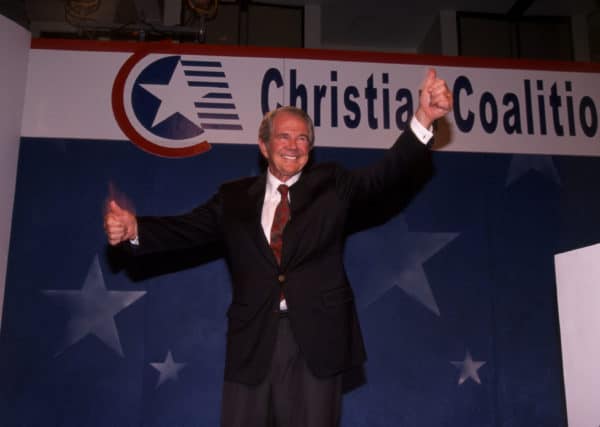
Aug 01, 2000; Philadelphia; Christian Coalition of America Founder Rev. Pat Robertson. (Credit Image: Nancy Kaszerman / ZUMAPRESS.com)
Conservative activists were also campaigning against the Fairness Doctrine. Dr. Matzko mentions that it was at an anti-Fairness Doctrine rally in February 1979 that Rev. Jerry Falwell got the idea for his Moral Majority organization, which significantly contributed to the election of Ronald Reagan the following year. Reagan was the featured speaker at a subsequent anti-Fairness Doctrine rally in August 1980. Addressing a crowd of 15,000 evangelicals, he said: “I know you can’t endorse me . . . but I want you to know that I endorse you and what you are doing.” [227] During his presidency, the FCC stopped enforcing the Fairness Doctrine. Finally, in August 1987, it voted unanimously to abolish it.
In some respects, things are worse since the period Dr. Matzko’s book covers. He found a lot of evidence that liberal campaigners were uneasy: “They felt the cognitive dissonance between their liberal beliefs and their illiberal acts. It was awkward being a liberal censor.” [224] Their successors clearly have no such qualms.















